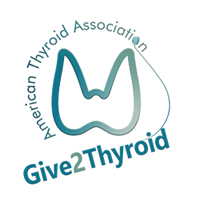BACKGROUND
Thyroid cancer is the fastest rising cancer in women. Fortunately, effective treatments exist and most patients have an excellent prognosis and death from thyroid cancer is rare. Persistent or recurrent cancer is more common and suspected or confirmed thyroid cancer recurrence is associated with psychological distress and increased cancer related worry. Treatment of cancer recurrence increases risk for complications such as hoarseness due to vocal cord paralysis (with recurrent surgery) and dry mouth due to salivary gland problems (with recurrent radioactive iodine therapy)
Treatment-free survival, which is living without the need for treatment for recurrent cancer, is an important outcome for patients. However, data regarding treatmentfree survival in the general population does not exist. What there is known about this outcome in general is limited to data from single institutions. The goal of this study was to understand factors associated with treatmentfree survival in the general population, because this will enable the care teams to tailor long term follow up to a particular situation, and, many times, help decrease patient worry.
THE FULL ARTICLE TITLE:
Banerjee M, Reyes-Gastelum D and Haymart MR 2018 Treatment-free survival in patients with differentiated thyroid cancer. J Clin Endocrinol Metab. Epub 2018 May 16. PMID: 29788217.
SUMMARY OF THE STUDY
Data for this study was obtained from a large national registry called Surveillance, Epidemiology and End Results (SEER) and Medicare data. A total of 9273 patients who were diagnosed with thyroid cancer between 1998 and 2012, who had a documented initial thyroid surgery and who did not have another diagnosis of a non-thyroid cancer , were selected for the study.
Their outcomes formed the basis for the analysis. Clinical characteristics that were recorded included age, race, household income, tumor stage, tumor size and type of treatment received.
A treated recurrence was defined as additional treatment done 1 year or more after diagnosis. Treatment-free survival was the time interval between diagnosis and treatment of recurrent/persistent cancer or to the time of analysis. Disease-specific survival was defined as the time interval from diagnosis to death from thyroid cancer or time of analysis. A complex statistical analysis was employed to analyze data obtained.




